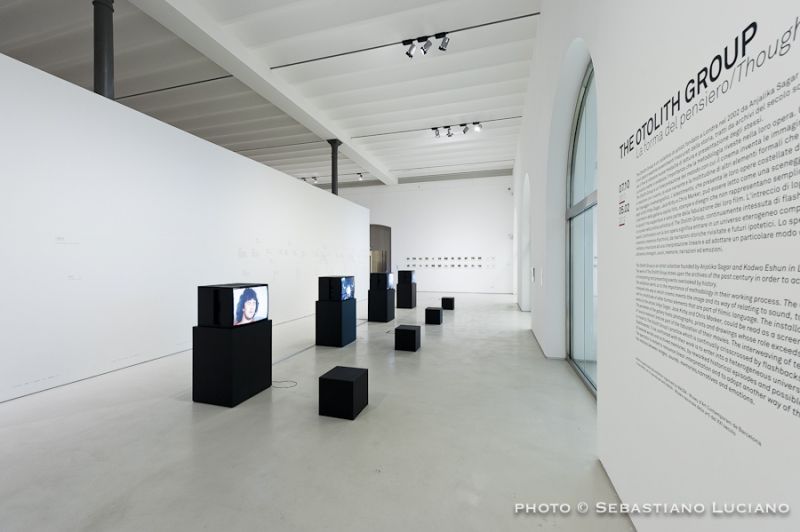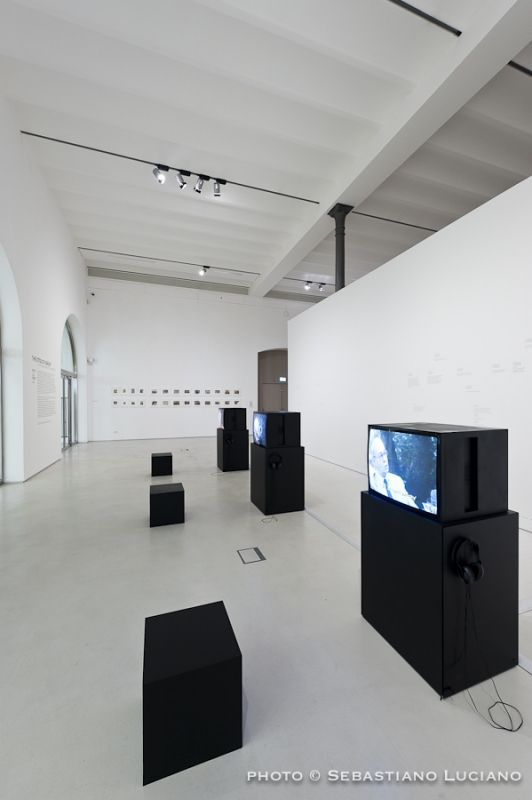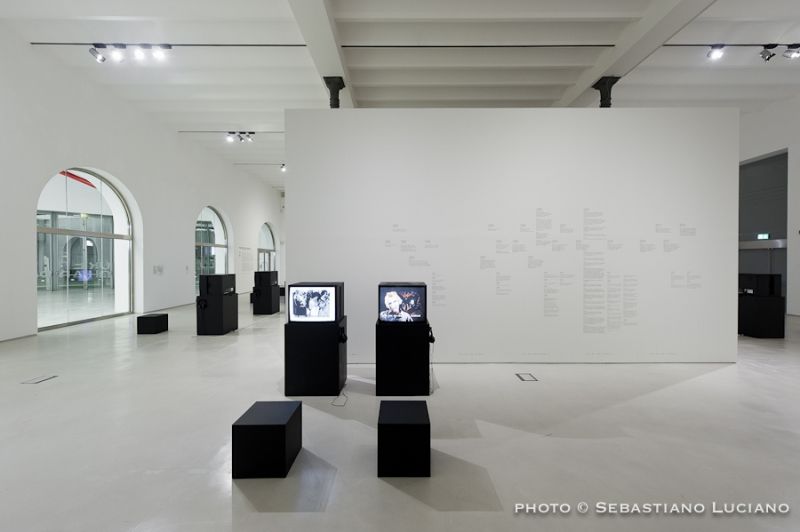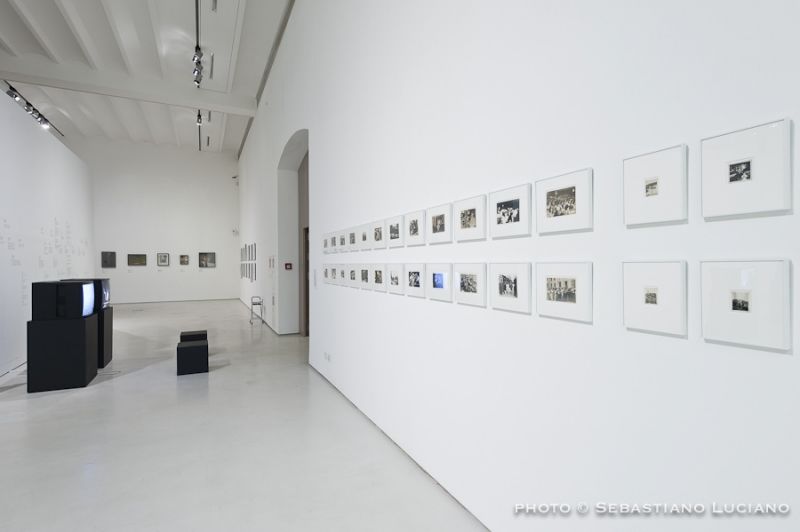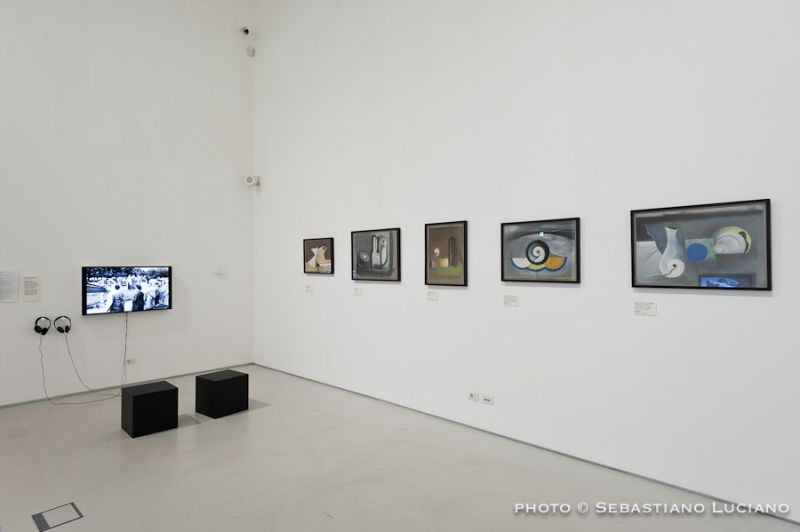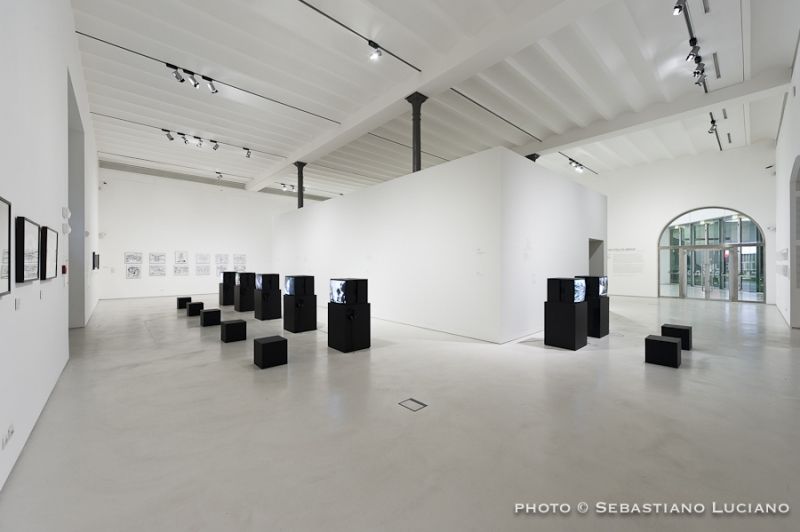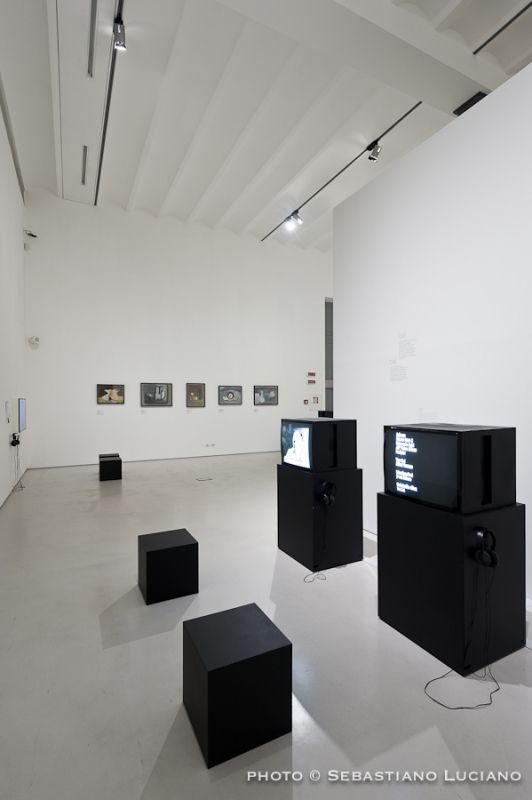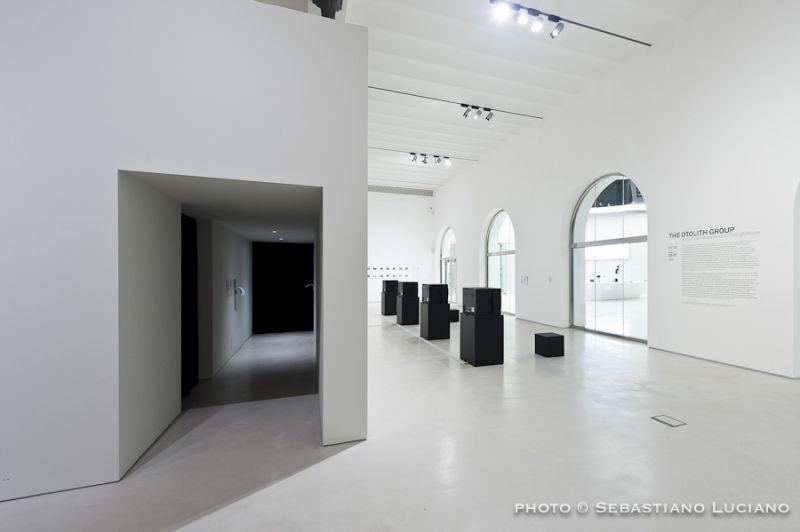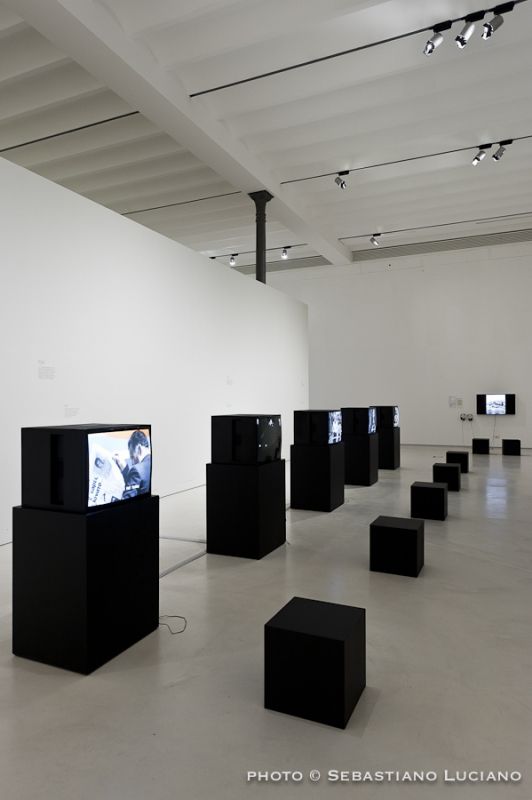Thoughtform, MACBA, the Museu d'Art Contemporani de Barcelona (MACBA), firstly, and MAXXI - Museo nazionale delle arti del XXI secolo, in Rome, subsequently, hosts a large proportion of the works the group has produced to date. The show enables visitors to explore an unusual working method that, through films, texts, science fiction posters, photographs and other materials, documents the complex decision-making processes that lead to the final work, reflecting on rather more than just the films shown. In reality, the exhibition is an exploration of the perception and nature of documentary practice, and the group's films therefore 'expand', acquiring the effect of a collage of images that create a new atlas narrating the different forms taken by post-colonial situations. From Cold War ideology to global capitalism processes, recent history appears as fragments of a personal diary which, in turn, could be fiction. Finally, parallel to the Barcelona showing of the exhibition and coinciding with the LOOP Festival, the MACBA Auditorium will host the world premiere of the second part of Hydra Decapita, The Otolith Group's new trilogy, co-produced with the MACBA Foundation. The aim of the exhibition is not only to show the works to date by The Otolith Group, but to familiarise the viewer with their working methodology: a complex way of understanding how cinema invents the image and its way of relating to sound and to the voice. But what is it that drives The Otolith Group to this constant alteration of genres? An interest in the ability of thought to give form to ideas. The subtitle of the exhibition (Thoughtform) is proof of that. It is borrowed from Thought Forms, a book published in 1901 and written by Annie Wood Besant (1847–1933, a socialist, feminist and active member of the Theosophical Society), and Charles W. Leadbeater (1854–1934), where the authors reflect on the nature and power of thought. "To exist is not enough," they claim on the last page, "we desire to live intelligently. But to live we must know, and to know we must study; and here is a vast field open before us...". To think is not the same as to reason; to think implies apprehending the meaning of what lies beyond that which can be expressed in words. The work of The Otolith Group is constantly pointing at this need to widen thought, hence their desire to complicate the task of understanding the work so as to avoid immediate and linear readings. The imagery that inspires their work comes from different sources and bears a unique status. It includes a series of science-fiction posters and a collection of historical photographs of communist delegations in and outside India. Despite its disparity, it helps to create a very particular image of the world and give an account of very specific systems of historical and ideological references. And yet the cohabitation of these two worlds is closer to life than the so-called narrative and aesthetic neutrality of the documentary genre, for instance. In this way, the exhibition approximates us to a multiplicity of stories and materials, since it is not a succession of arguments but an opportunity for the viewer to engage in a particular way of thinking: to think through matter-image, matter-sound, matter-memory, matter-narration, matter-emotion; everything can have a plastic quality to which our mind can give form. To understand is to mould what we apprehend with the senses and to shape it in our mind, a shape that will vary for each of us. History as a succession of befores and afters Timeline (2003) is one of the first works we find as we enter the exhibition: a chronological axis along which a series of facts related to The Otolith Group are situated, although it also introduces other details and characters that refer to a 'wider' reality than the one represented by these two people and the sum of their works. The chronological axis is a graphically designed line that represents linear time, history as a succession of befores and afters. The mere fact of representing time with a line leads us to relate some events to others. As the British philosopher David Hume (1711–1776) said in his controversial refutation of the principle of causality, it is empirically impossible to prove that one thing follows another. It is the human mind that needs to establish such a powerful link in order to explain one event because of the existence of another. We have learned to read history in this way and, in an attempt to question the logic of it, The Otolith Group bombards us with an avalanche of data, facts and characters that are practically impossible to piece together. An important theme throughout the exhibition is the 'tone'. The study of what is said or the medium used to express it must go hand in hand with the ideological part played by the tone, the emotional component that accompanies the transmission of any item of information. In Communists Like Us (2006) or in The Otolith Trilogy (2003–9), this question is particularly relevant. While Communists Like Us adopts a more academic narrative form to relate a real event – a journey to Mao's China undertaken by Anjalika Sagar's grandmother, presented here with the subtitles of Godard's film La Chinoise (1967), the trilogy is much more drastic in its contrasting of reality and fiction. This is a complex filmic essay were real events, documents, proofs that certify the facts and `real' characters coexist with others that never existed: Demonstrations against the Iraq war in London, 2003, interspersed with the history of the Soviet space race and Anjalika Sagar's visit to Valentina Tereshkova's (the first woman to travel into space on board Vostok 6, in 1963) training camp in Moscow, in Otolith I (2003). The history of modernity in India, the working conditions in a future India and images of Chandigarh, the city built by Le Corbusier, in Otolith II (2007). The study of a never-realised science-fiction film as a premise to approximate India and see it all as a potential scenario for the shooting of the film, in Otolith III (2009). In the course of the exhibition, viewers can find themselves, for instance, faced with a series of pastel paintings by Vidya Sagar a London based artist who studied at Delhi College of Modern Art in the late 1950s and at London School of Film Technique, next to other materials such as images of Valentina Tereshkova or a series of drawings by Jack Kirby, a seminal figure in the history of American comics and the most influential creator of superheroes. The drawings, together with the images of Tereshkova and the series of pastels by Vydia Sagar, contribute to create an effect of the 'double'. The viewer sees this material in two spaces: the filmic space, since it appears on film and the real space because this same material is included as works in the exhibition. The works also exist in two different temporal dimensions, that of the work and that of our actual visit to the museum, which is part of our biography as viewers. This, in turn, helps to create another confusion as to whether all this material existed or not prior to the work. Did it exist and is that why it is reflected in the work? Or has it been invented by the authors and is that why it is here, as just one more work in the exhibition? This constant playing with time, with simultaneous realities, as well as the use of the anachronistic – the great tool used to elude the eternal question of development and progress outside of the Western world – are an attempt to formulate a discourse by using a logic other than the interpretation of documentary texts or the revision of archives containing oral narrations. Parallel worlds enable us to imagine symmetrical archives: one real, composed of past material, and a future one that we have to invent, propose, imagine. As in quantum physics, what matters is not what has already happened, but the possibility of what may happen in two worlds at once, in two places at the same time. The work of The Otolith Group alerts us to the importance of methodology. Each work helps to create a movement of speculative rebellion, and we must study each contrasted piece carefully so as not to trivialise the resources. One of their proposals consists in (dis)figuring our understanding of history, in particular the hegemonic power of Europe in the colonies. Far from presenting themselves as interpreters of or commentators upon the past, they propose the impossibility of coherence within the text, of narration as a point of departure. Theirs is a polysemic discourse capable of skirting the question of whether it is really meaningful, of its ultimate significance. Chus Martinez The exhibition has been organised by: Museu d'Art Contemporani de Barcelona (MACBA) and coproduced in cooperation with the Fondazione MAXXI, Rome.
